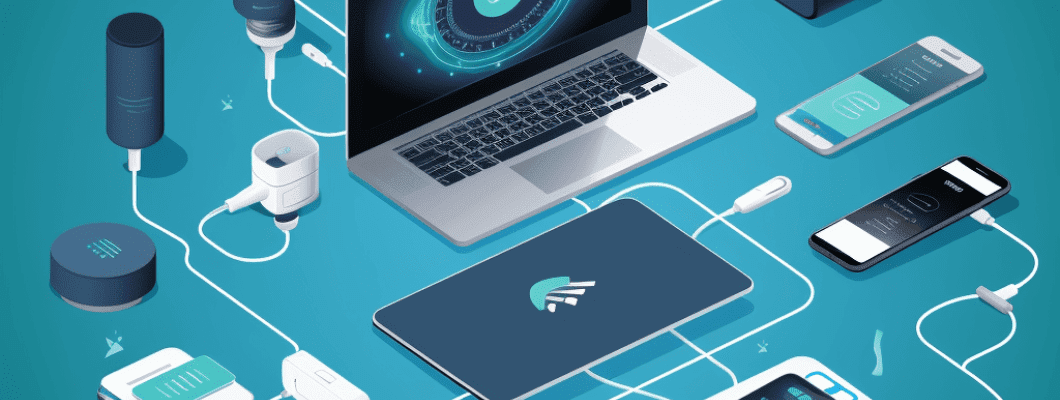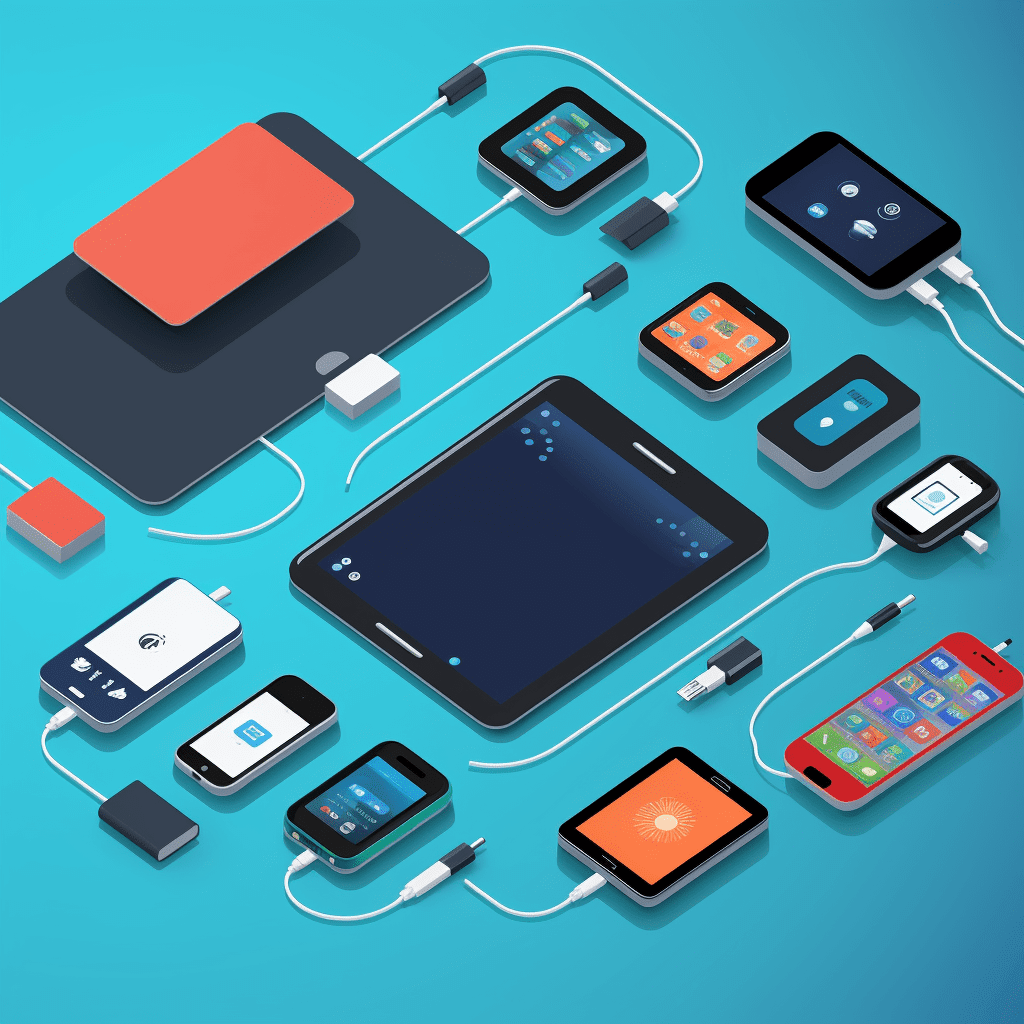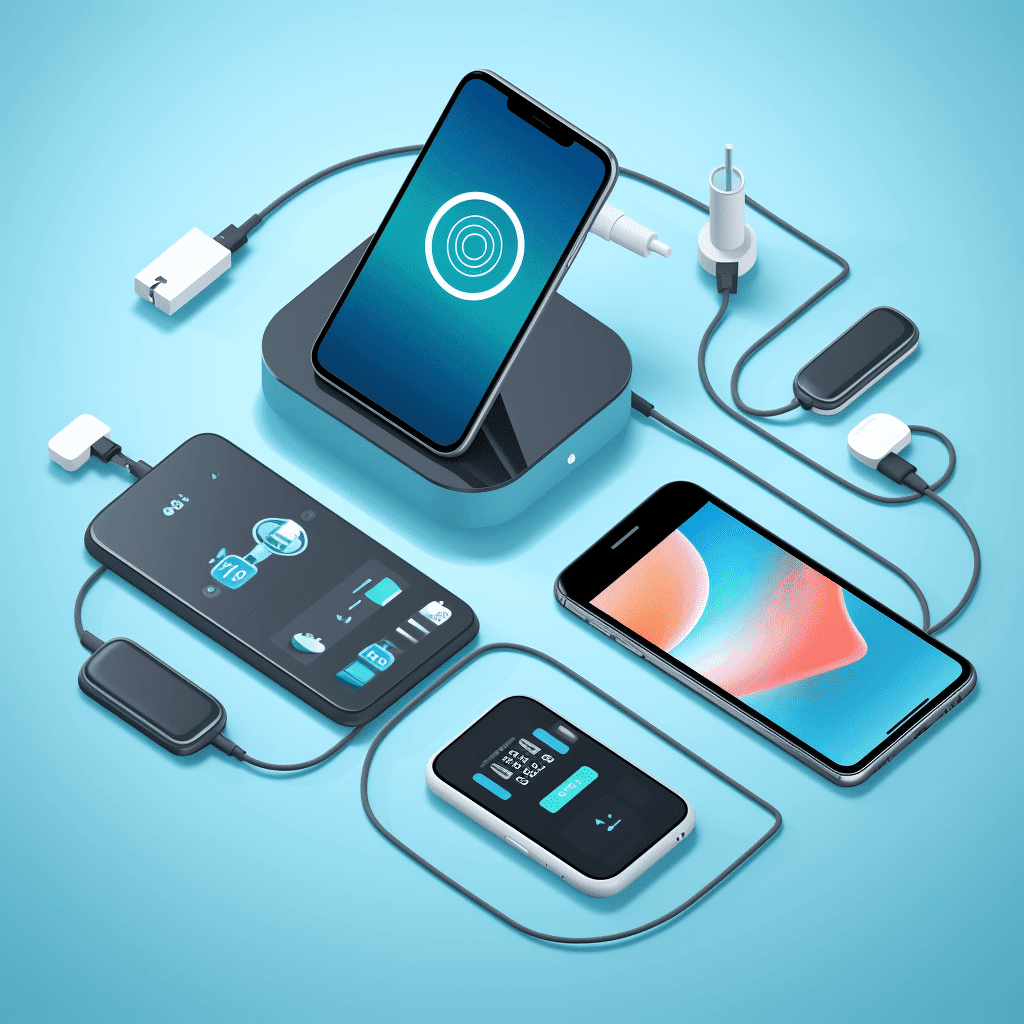
We've all been there. The battery icon on our phone turns red, we're out and about, and we don't have our charger with us. What do you do? There's no need to panic! There are plenty of creative and efficient ways to charge your phone without a standard wall charger. Not only do these methods work well in a pinch, but they can also be handy in situations where power outlets may be scarce or unavailable, such as camping trips or during a power outage.
In this article, we will explore several alternative methods of charging your phone, including using portable power banks, hand-crank chargers, solar-powered chargers, charging through laptops or PCs, car chargers, wireless charging options, and even some emergency charging techniques. We will discuss the pros and cons of each method and provide safety tips to ensure that you charge your phone without causing any harm to your device or yourself.
Note: Before proceeding with any of the charging methods mentioned in this article, it is crucial to consult the user manual of your phone or contact the manufacturer to ensure compatibility and prevent potential damage to your device.
Utilizing Portable Power Banks
One of the most convenient and popular ways to charge your phone without a standard charger is by using a portable power bank. Power banks are compact, portable devices that store electrical energy and can be used to charge smartphones and other electronic devices.
Pros:
- Portability: Power banks are small and lightweight, making them easy to carry around in your pocket or bag.
- Capacity: Power banks come in various capacities, allowing you to charge your phone multiple times.
- Compatibility: Most power banks use a USB output, making them compatible with a wide range of devices.
- Quick Charging: Some power banks offer fast charging capabilities, enabling you to charge your phone more quickly.
Cons:
- Recharging: Power banks need to be recharged after they are depleted, requiring access to a power source.
- Degradation: Over time, power banks can lose their ability to hold a charge.
- Weight: Higher capacity power banks can be bulkier and heavier.
How to Use:
- Pre-Charge: Before you head out, make sure your power bank is fully charged.
- Connect: Use a compatible cable to connect your phone to the power bank.
- Charge: Turn on the power bank, and your phone will start charging.
- Disconnect: Once your phone is charged, disconnect it from the power bank.
Safety Tips:
- Quality: Invest in a good-quality power bank from a reputable brand to avoid safety hazards.
- Overcharging: Avoid overcharging your power bank, as it can degrade the battery.
- Temperature: Keep your power bank away from extreme temperatures to prevent damage.
It's important to note that while power banks are a reliable way to charge your phone on the go, they should not be a replacement for regular charging methods. Ensure that you charge your power bank and phone using standard chargers when possible.
Charging with a Hand-Crank Charger
Hand-crank chargers are an excellent alternative charging method, especially in emergency situations where access to electricity may be limited. These chargers work by converting mechanical energy into electrical energy through the act of turning a handle or crank.
Pros:
- Emergency Use: Hand-crank chargers are invaluable in emergencies when no other power source is available.
- No Batteries Required: These chargers don't rely on batteries, making them an excellent long-term solution.
- Environmental Benefits: Hand-crank chargers harness human power and do not contribute to pollution.
Cons:
- Effort Required: Charging your phone with a hand-crank charger requires physical effort, which may not be suitable for everyone.
- Slow Charging: The charging speed is usually slower compared to other methods.
How to Use:
- Connect: Attach your phone to the hand-crank charger using the appropriate cable.
- Crank: Turn the handle or crank as instructed by the charger's manual. This generates electricity, which is then transferred to your phone.
- Monitor: Keep an eye on your phone's battery level and stop cranking once it reaches the desired level.
Safety Tips:
- Proper Use: Follow the instructions provided in the charger's manual to ensure proper usage.
- Avoid Overexertion: If you're using a hand-crank charger for an extended period, take breaks to avoid overexertion.
- Quality: Opt for a high-quality hand-crank charger from a trusted brand to ensure efficient and safe charging.
Hand-crank chargers are a reliable backup option for charging your phone in emergencies or when you're off the grid. However, they should not be your primary method of charging, as they require physical effort and may not provide a full charge as quickly as other options.
Solar Powered Charging
Solar-powered chargers are an environmentally friendly way to charge your phone without a standard charger. These devices use solar panels to convert sunlight into electricity, which can then be used to charge your phone or other electronic devices.
Pros:
- Eco-Friendly: Solar-powered chargers harness renewable energy from the sun, reducing your carbon footprint.
- Off-Grid Charging: Ideal for camping trips, hiking, or other outdoor activities where access to electricity is limited.
- Self-Sufficient: These chargers can generate power independently as long as there is sunlight.
Cons:
- Weather Dependent: Solar chargers rely on sunlight, making them less effective on cloudy or rainy days.
- Slower Charging: Solar charging can be slower than other methods, especially in suboptimal lighting conditions.
- Bulkier: Solar chargers can be larger and heavier than other portable charging options due to the solar panels.
How to Use:
- Placement: Position the solar panels in direct sunlight for optimal charging efficiency.
- Connect: Use the appropriate cable to connect your phone to the solar charger.
- Charge: Allow your phone to charge, keeping an eye on the battery level.
- Adjust: Reposition the solar panels as needed to maximize exposure to sunlight.
Safety Tips:
- Temperature: Solar panels can get hot in direct sunlight. Avoid touching them with bare hands and keep them away from flammable materials.
- Angle: Position the solar panels at the optimal angle to capture sunlight effectively.
- Protection: Use a high-quality solar charger with built-in protection against overcharging, short-circuits, and other potential hazards.
Solar-powered chargers are an excellent choice for outdoor enthusiasts and those who want to reduce their environmental impact. However, they may not be the best option for everyday use or in areas with frequent cloudy weather.
Charging through Laptops or PCs
Using a laptop or PC is another convenient way to charge your phone when you don't have access to a standard wall charger. Most modern computers come equipped with USB ports, making it easy to connect your phone and charge it.
Pros:
- Convenience: If you're already working on a computer, you can easily connect your phone for charging without needing an additional power source.
- Widely Available: USB ports are standard on most laptops and PCs, making this a widely accessible charging option.
Cons:
- Slower Charging: Charging through a computer's USB port may be slower than using a wall charger or power bank.
- Requires Powered Computer: The computer must be powered on or in sleep mode for this method to work.
How to Use:
Connect: Plug one end of your phone's charging cable into the phone and the other end into a USB port on your laptop or PC.
Charge: Your phone should start charging automatically. If it doesn't, check the connection and your computer's settings.
Disconnect: Once your phone is charged, safely disconnect it from the computer.
Safety Tips:
- Data Protection: Be cautious when connecting your phone to public computers, as there may be a risk of data theft or malware infection.
- Eject Safely: On some operating systems, it's essential to eject your phone safely before disconnecting to prevent data corruption.
- Cable Quality: Use a high-quality, compatible charging cable to avoid potential damage to your phone or computer.
Charging your phone through a laptop or PC is a practical and convenient method, especially when you're already using the computer. However, it may not be the fastest way to charge your phone, and it requires access to a powered computer.
Charging with Car Chargers
Car chargers are a handy option for charging your phone on the go, especially during long road trips or commutes. These chargers plug into your car's 12V power outlet (cigarette lighter socket) and allow you to charge your phone while driving.
Pros:
- On-the-Go Charging: Car chargers are ideal for keeping your phone charged during long drives or commutes.
- Fast Charging: Many car chargers support fast charging, allowing you to charge your phone quickly.
- Multi-Device Charging: Some car chargers come with multiple USB ports, enabling you to charge more than one device simultaneously.
Cons:
- Vehicle Dependent: This method requires access to a vehicle with a functioning power outlet.
- Limited Usage: Car chargers are useful only when you're in a vehicle.
How to Use:
- Connect: Plug the car charger into the vehicle's 12V power outlet.
- Attach: Connect your phone to the car charger using the appropriate charging cable.
- Charge: Your phone will start charging once the vehicle is running.
- Disconnect: Safely remove the charger and your phone once the charging is complete.
Safety Tips:
- Driving Safety: Avoid using your phone while driving. If you need to make a call or use GPS, use hands-free options or pull over safely.
- Quality: Invest in a high-quality car charger from a reputable brand to ensure safe and efficient charging.
- Temperature: Avoid leaving your phone or charger in a hot car, as high temperatures can damage both devices.
Car chargers are a practical option for keeping your phone charged on the go. However, they are limited to vehicle use and may not be suitable for everyone.
Wireless Charging Options
Wireless charging is becoming increasingly popular as a convenient and hassle-free way to charge your phone. This method uses electromagnetic fields to transfer energy between the charging pad and your phone, eliminating the need for physical connectors or cables.
Pros:
- Convenience: Simply place your phone on the charging pad, and it will start charging without the need for cables.
- Universal Compatibility: Many new smartphones support wireless charging, and a single charging pad can be used for multiple devices.
- Fewer Cables: Reduce clutter and the need for multiple charging cables.
Cons:
- Slower Charging: Wireless charging may be slower than charging with a cable, especially if the charging pad does not support fast charging.
- Positioning: Your phone must be correctly aligned on the charging pad for optimal charging.
How to Use:
- Placement: Place your phone on the wireless charging pad, ensuring that it is correctly aligned with the charging coils.
- Charge: Your phone should start charging automatically. If it doesn't, adjust its position on the pad.
- Monitor: Keep an eye on your phone's battery level and remove it from the pad once it's charged.
Safety Tips:
- Quality: Choose a high-quality wireless charging pad from a reputable brand to ensure safe and efficient charging.
- Cases: Some phone cases may interfere with wireless charging. If you experience issues, try removing the case.
- Heat: Wireless charging can generate heat. Ensure that your charging pad and phone do not get too hot during the process.
Wireless charging is a convenient and modern way to charge your phone, especially if you have multiple devices that support this feature. However, it may not be the fastest option, and proper alignment is crucial for optimal charging.
Innovative Charging Methods
As technology advances, innovative methods for charging phones without a charger are emerging. Some of these methods are still in the experimental stage, while others are available on the market. In this chapter, we will explore a few of these cutting-edge charging methods.
- Energy Harvesting: This technology converts ambient energy from sources like radio frequency signals, vibrations, or heat into electrical energy to charge your phone. While still in development, energy harvesting holds promise for creating a self-charging phone ecosystem.
- Piezoelectric Charging: Piezoelectric materials generate an electric charge in response to mechanical stress. Researchers are exploring ways to use these materials in shoes or clothing to harvest energy from movement and charge phones.
- Thermoelectric Charging: Thermoelectric materials can convert temperature differences into electricity. Charging pads using this technology could charge your phone by harnessing heat from a hot beverage or your body heat.
- Motion Charging: Some wearables, like watches, use motion charging technology to harness kinetic energy from the user's movements and charge the device. Adapting this technology to phones could provide an additional charging option.
Pros:
- Eco-Friendly: These methods harness ambient or renewable energy sources, reducing the need for fossil fuels.
- Innovative: These technologies offer new and exciting ways to keep your phone charged.
Cons:
- Experimental: Some of these methods are still in the experimental stage and may not be commercially available.
- Efficiency: The efficiency of these methods may vary, and they might not provide as fast or reliable charging as conventional methods.
Safety Tips:
- Research: If you decide to try one of these innovative methods, research thoroughly to ensure it's safe and reliable.
Backup: Keep a conventional charging method on hand as a backup in case these methods do not provide enough charge.
Innovative charging methods are paving the way for a future where keeping your phone charged becomes more convenient and sustainable. However, as some of these technologies are still in development, it's essential to approach them with caution and have backup charging options available.
Choosing the Right Charging Method
Selecting the best charging method for your phone depends on your specific needs, environment, and the resources available to you. Here are some factors to consider when choosing a charging method:
- Speed: If you need a quick charge, opt for a power bank or car charger that supports fast charging.
- Portability: For on-the-go charging, a power bank or car charger is more suitable.
- Convenience: For hassle-free charging at home or the office, a wireless charging pad might be the best choice.
- Environmental Impact: Solar-powered chargers or innovative charging methods can reduce your carbon footprint.
- Emergency Situations: In emergencies or power outages, hand-crank chargers or energy harvesting methods can be life-savers.
- Multi-device Charging: If you need to charge multiple devices, choose a car charger or power bank with multiple USB ports.
Conclusion:
Charging your phone without a charger has never been easier, thanks to the various alternative methods available. Whether you're looking for a portable solution, an eco-friendly option, or an emergency backup, there's a charging method to suit your needs. Remember to prioritize safety and choose high-quality, reputable devices to ensure efficient and reliable charging.








